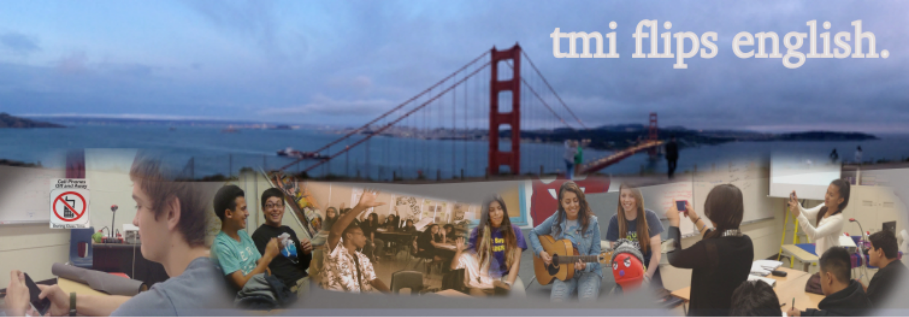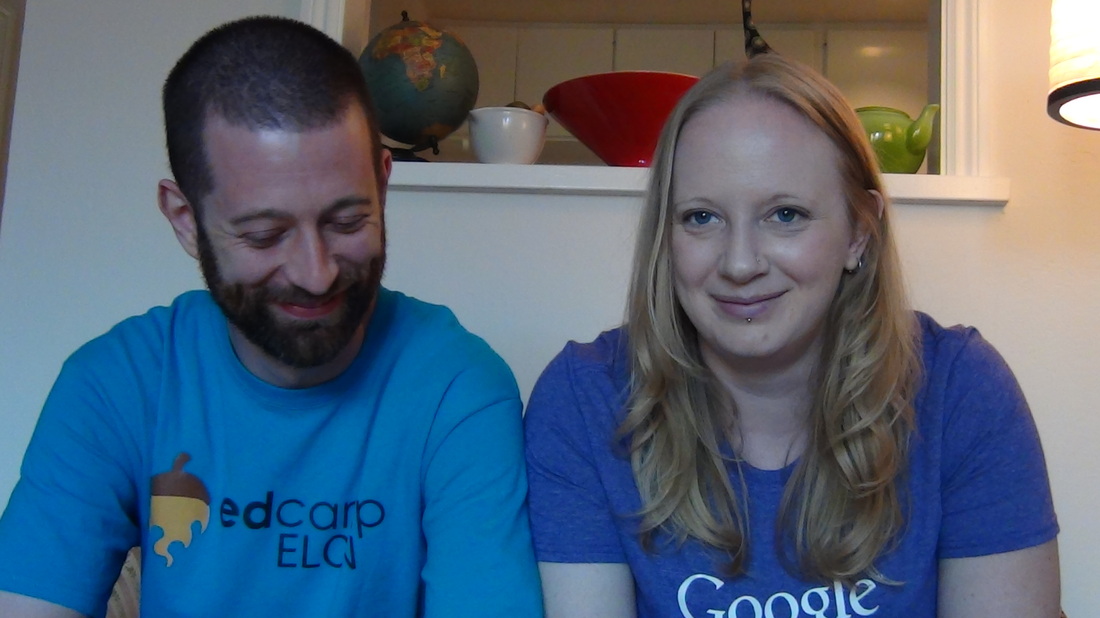Naming something, defining it, is a way of understanding. We give things names so we can catagorise, analyse, interpret. It's natural, and it's helpful.
But what happens when something changes, expands, grows, and the definition no longer is quite right? Do we come up with a new term? Do we become more strict with the definition so as to be more clear?
Or do we expand that term so that, rather than constricting our understanding, it widens it and allows for more people to come inside and be included.
That, more than anything, defines flipped learning for me: inclusive.
When I happened upon flipped learning at this time last year, I didn't see how I could fit in. My students were poor, they lacked internet at home, and I had no way of recording video. Oh yeah, and all the models out there were for math and science, and I taught English.
But there was something about flipped learning that caught my attention. In a school where direct instruction was mandated and commonplace - almost part of the DNA - it seemed like something that would both please my administrators AND help my students learn. I could do direct instruction but I could also spend more time helping my students get better at reading, writing, listening and speaking.
It seemed like the perfect solution in many ways.
So I went looking for a way to make it work. My district Ed Tech director got me an iPad so I could make my own videos. I polled my students, and only three of them didn't have a smartphone or a computer with internet access at home (this was in a 90% SED school). I arranged for those three students to use my devices during break, lunch or before/after school. So I made some videos with the week's etymology lesson, assigned them as homework, and used the time we would have spent copying the notes practicing with the content, doing real-life examples, and playing memory games. Test scores on the weekly quizzes went up, and I was confident I was on to something.
Then that same Ed Tech director pitched Twitter to us. And I was Not Interested. At all.
For a few days. Finally, I just asked my students to teach me Twitter and help me get started. They were happy to oblige.
Very quickly, I was hooked. And that's also when I discovered that there was so much more to flipped learning than I had ever expected.
I joined the #flipclass Monday chats (which now I help moderate semi-regularly).
I started blogging and sharing my posts on Twitter (which may be where you found this post).
I had conversations with some of the people I had read about - Brian Bennett, Crystal Kirch, Troy Cockrum, Jon Bergmann, Aaron Sams - and they all helped to push my thinking on various issues. Many have now become my close friends.
That's how, within six weeks of flipping, I transitioned from "Flip 101" (assigning videos as HW and former homework as classwork) to something that I still saw as flipped, but wasn't the same as how many of my colleagues flipped their class.
My classroom quickly became mastery-based, paperless, self-paced and homework free. I still made videos, I still used many of the same tools as my Flip 101 colleagues...
...and I still tweeted to the same hashtag.
Flipping my class no longer was my goal. I was flipped. Instead, my goal was to make my flipped class the best possible place for MY students, in MY context. I started to view flipped learning as a place where students had ownership (responsibility was flipped to them from me) and where I used technology to help them learn best. Later, I moved to defining flipped learning by the Flipped Mindset - a definition developed by several collaborators on Twitter.
Now, a year into my flipped journey, my classroom looks different than it did last fall, last spring, or even at the beginning of this school year.
I have what I like to call my CoLab partner, Andrew Thomasson. He helps me plan all of my instruction, prepares for and films video lessons with me, and encourages me to be a reflective practitioner, a good flipped teacher, and a better friend. I'm at a new school and operate with a BYOD policy and open wifi network. My students are much higher skilled, and require far less direct instruction (almost none). I don't assign homework, and don't always use video. I've stepped away from self-pacing and paperless (without 1:1 netbooks, that's a lot harder) and embraced a far more student-centred pedagogy that focuses on higher-order thinking skills and real-life application of concepts.
There are many people who would say I'm not flipped.
And I would argue, just as vehemently, that I am.
**
When Romeo asked himself, "what's in a name?" I doubt he was thinking about its application to the flipped class community. Nevertheless, it's a good question.
So, flipped class community, what's in a name?
For me, this is what's in a name:
- a method by which I started to listen more to my students, and work to meet their individual needs. I learned most of those things from my community on Twitter and Edmodo.
- a move to a more reflective practice - one I never imagined. I didn't know that to be reflective, you need someone who will help you process. That is what happens in the flipclass community on a daily basis.
- a return to my writing - something I had always thought of, but never had inspiration to sustain. This blog is the most meaningful writing I've done since I graduated from college. And I am now writing more than just blog entries, which has helped me work through a lot, personally and professionally.
- a transformational experience - one that not only changed me, but changed how my students experience me as their teacher. That was only possible by moving over the bridge that flipclass built.
- a group of people - my Cheesebuckets - who listen to me, protect me, question me, challenge me, and keep insisting that I should not stay where I am, but keep moving forward, getting better. These people would not be in my life without flipclass. And my life would be far less rich without them.
- and most importantly: a collaborative partner, a new BFF, someone to listen to me, help me channel my crazy ideas (and sometimes, add more craziness until they actually start to make sense), doesn't let me stay frustrated or resentful, but insists that we work things out, and most importantly, someone I can trust and who I know cares about me, both as a teacher and as a person, and about my work in the classroom.
So what's in a name? A change that has given my students a better teacher and a better education. A community where I am inspired, engaged in conversation, and often, challenged so that I don't grow stagnant.
And most importantly, I now have friends. Friends who share the family name - flipped class - and unites us around a common goal: making our classroom the best possible place for our individual and corporate student body, and for us as teachers.
And even though some of us may start to grow into more distant cousins, if we give up the family name, it would mean denying where we came from. This is the kind of family that doesn't disown a brother who shies away from family gatherings; it's the kind of family that expands, becomes more inclusive as more and more distant relations show up on our doorstep, needing our help, our acceptance, our love. It's also the kind of family that still welcomes you, even when you don't need it anymore.
This family name is where our roots are.
This family name is who our people are.
This family name - flipped class - is who WE are. Together.
That is what's in THIS name.
And I'm proud to be in this family. No Matter What.


 RSS Feed
RSS Feed
